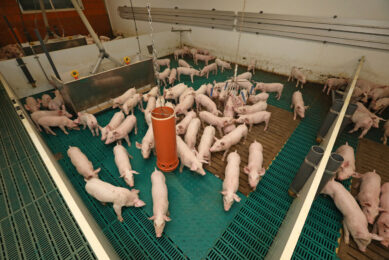Antimicrobials: Has the EU parliament resorted to propaganda?

The recent report entitled ‘Antimicrobials Restrictions in Animal Feed’ really does leave one quite bemused – is this really the basis of political discussion and decision making in the EU?
The report, published in July 2015, is meant to be an ‘In-Depth Analysis for the ENVI Committee‘ part of the Directorate-General for Internal Policies, Policy Department A – Economic and Scientific Policy – Environment, Public Health and Food Safety (Com-ENVI).
The abstract states:
“Abstract
The antimicrobials usage in food-producing animals has affected public health with the development of antibiotic resistance. The annual societal costs related to antibiotic resistance are significant. Preserving the effectiveness of the current antibiotics is important as this can incentivize pharmaceutical firms to develop new drugs. Restriction of antibiotics usage can potentially lead to less resistant strains, diminished health care costs and productivity losses, and fewer side effects for humans.”
There is actually no mention of Antimicrobial Restrictions in Animal Feed, or why there should or should not be restrictions. The first sentence is rather a sweeping generalisation, largely unsupported in the document. Is this tantamount to propaganda?
In the Executive Summary it states:
“Findings show that the use of antimicrobials in livestock animals has potential effects on humans through horizontal transfer…. These can be either pathogens that can directly and indirectly infect humans, or commensals that may carry transferable resistance determinants across species and therefore, can reach humans through multiple routes of transfer.”
Interesting potentially, but what about some good examples?
“Other evidence shows that it is the inappropriate use of antibiotics in people that has accelerated the antibiotics resistance.”
Now that is a surprise, or is it? Let’s see.
Further on in the Report:
“3. USAGE IN ANIMAL FEED
Scientific evidence shows that both therapeutic and nontherapeutic antimicrobial usage in animals lead to an increase of substantial amounts of antimicrobial-resistant bacteria. These can exist in two different forms: as pathogens, which can directly and indirectly infect humans, and as commensals, which may carry transferable resistance determinants across species and therefore, can reach humans through multiple routes of transfer, such as food, water, sludge, and manure applications to food crop soils (27).
There is strong evidence that the use of antimicrobials in livestock animals has potential effects on humans through horizontal transfer (22, 28). This is the process in which genetic material can be transferred between individual bacteria of the same species or between different species. This mechanism can accelerate the spread of antibiotic-resistant genes (29). An example of interspecies transfer between animals and humans is through the commonly used antibiotic extended-spectrum cephalosporins. This is mostly used for treating serious human and animal infections, such as sepsis, skin and soft-tissue infections, and urinary tract infections. The extended-spectrum beta-lactamases (ESBL) are enzymes able to inactivate this antibiotic in veterinary medicine, which are present in life threatening pathogens in both humans and animals and determine the resistance to β-lactam antibiotics (22, 27).”
Potentially, this is true but the one example given is the use of extended spectrum cephalosporins (3rd and 4th generation cephalosporins) and these are not used in feed but by injection and as intra-mammary products in veterinary medicine.
Wu and others (2013) examined ESBLs found in E. coli (commensals) from animals and food in the UK, The Netherlands and Germany and compared them with ESBLs found in man (mainly from E. coli urinary tract infections) using genetic means (multi-locus sequence typing – MLST). They found 0/127 ESBLs from human isolates were identical to those from animals and food i.e. there was no link.
I reported in a recent weblog that the Swedish authorities (SVARM, 2015) looked at the transmission of ESBLs from food (imported and locally produced) and animals to man. Using genetic means also (MLST) in a larger survey, they could show that only 1/379 ESBLs associated with blood infections in man was identical to and potentially related to those found in animals or food i.e. a very small link.
Therefore, if we take “one health” as a whole using this Com-ENVI report example of ESBLs, which is totally unrelated to in-feed use of antimicrobials – indirect transmission of antimicrobial resistance in animals and food to man contribute 0.26% and direct transmission from use in man 99.74%.
Is this really an example of the basis that the European Parliament and possibly the whole of Europe are making major legislative decisions on veterinary medicines and in-feed medication in particular? I despair. What do you think?











